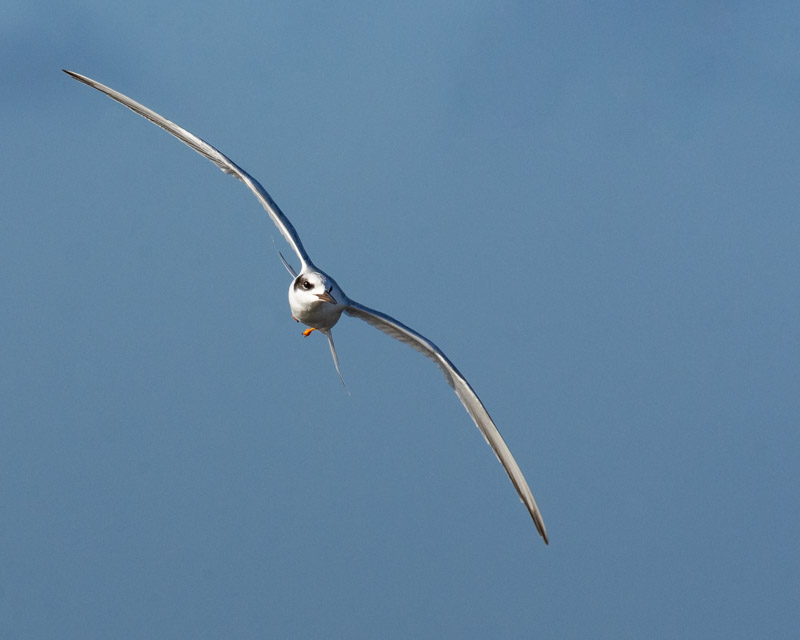By Dan Weisz
Here is another species of bird that winters at the closest beach to the Foothills: Rocky Point, Mexico. Because of migration, Tucson has seen one of these birds annualy over the past few years. Currently, one can be seen at Lakeside Park. Terns are seabirds and they all are slender birds with long forked tails, narrow wings and long bills. They are much more streamlined than gulls, a more recognized and common seabird. Terns’ shape gives them an elegance in flight. At Rocky Point last week, there were many Forster’s Terns hunting each morning.
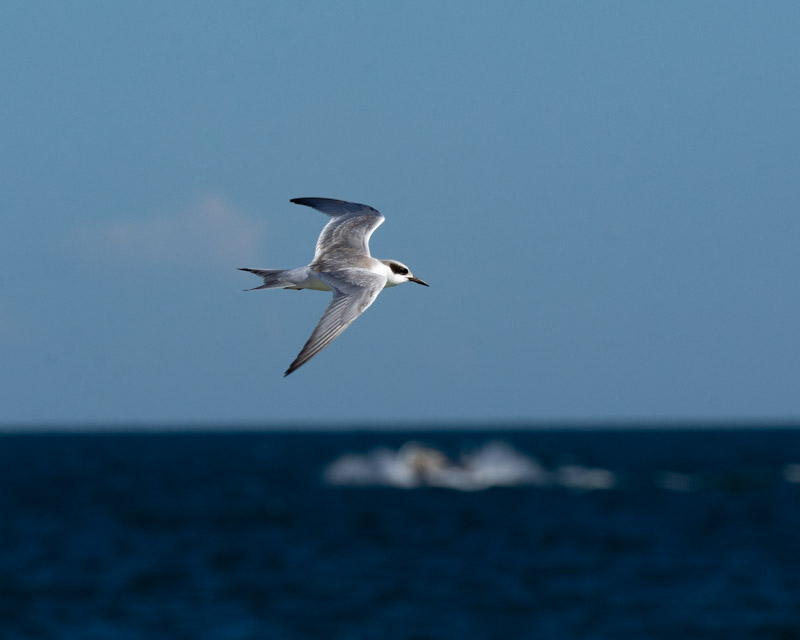
The Forster’s Terns were flying back and forth over the shallow water near the shore. You can see this one looking straight down into the water for fish.
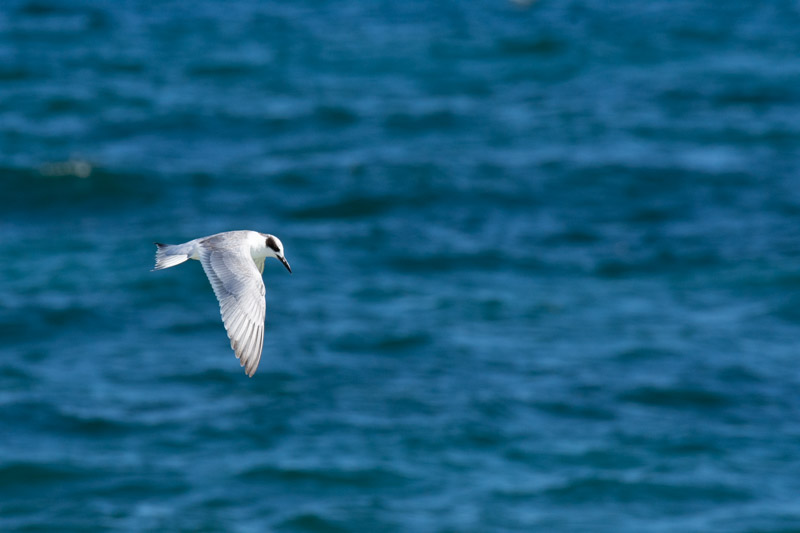
These birds move so fast. “Streamlined” describes their shape perfectly. They definitely look like they were designed for speed.
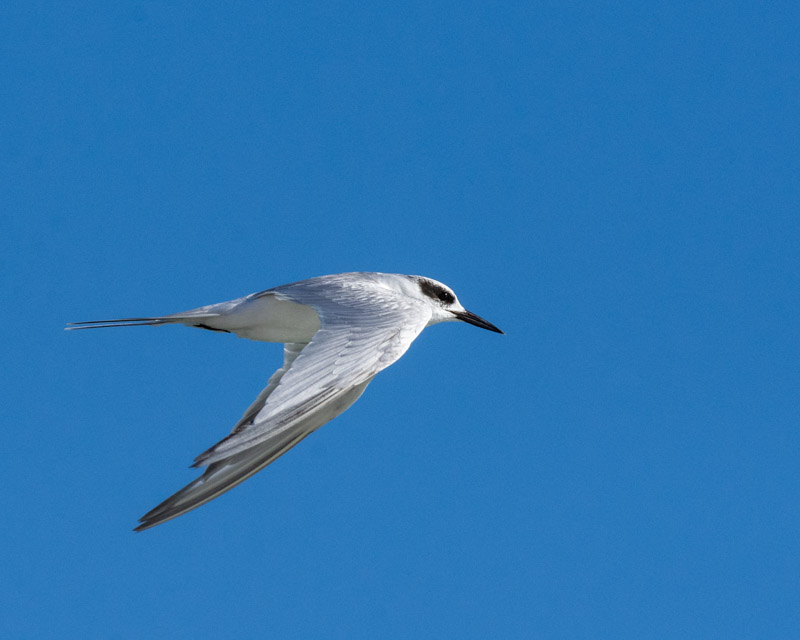
At times, the terns headed directly into the wind and seemed to float over the water.
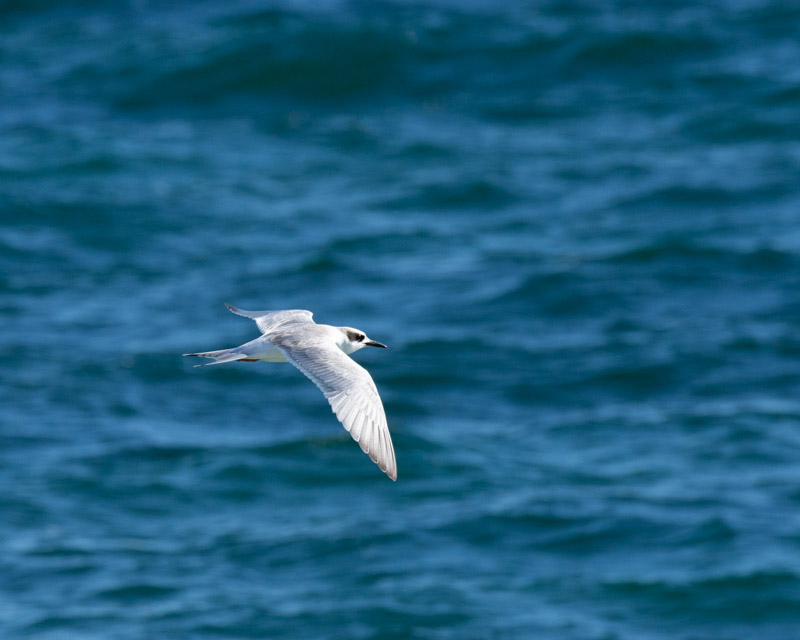
During breeding season, Forster’s Terns have a full black cap and their beaks are orange with a black tip. During non-breeding season, their bills turn black and their heads become white wiht a black eyepatch remaining.
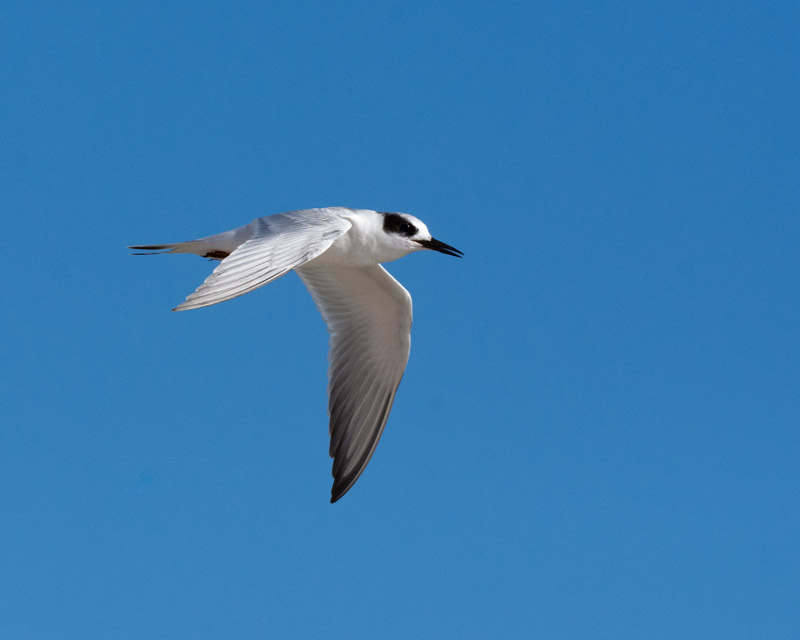
I associate Terns with the Ocean, as that’s where I see terns. But Forster’s Terns generally spend their summers at inland marshes, coming to ocean shores for the winter. Check out Audubon’s Range map for Forster’s Terns:
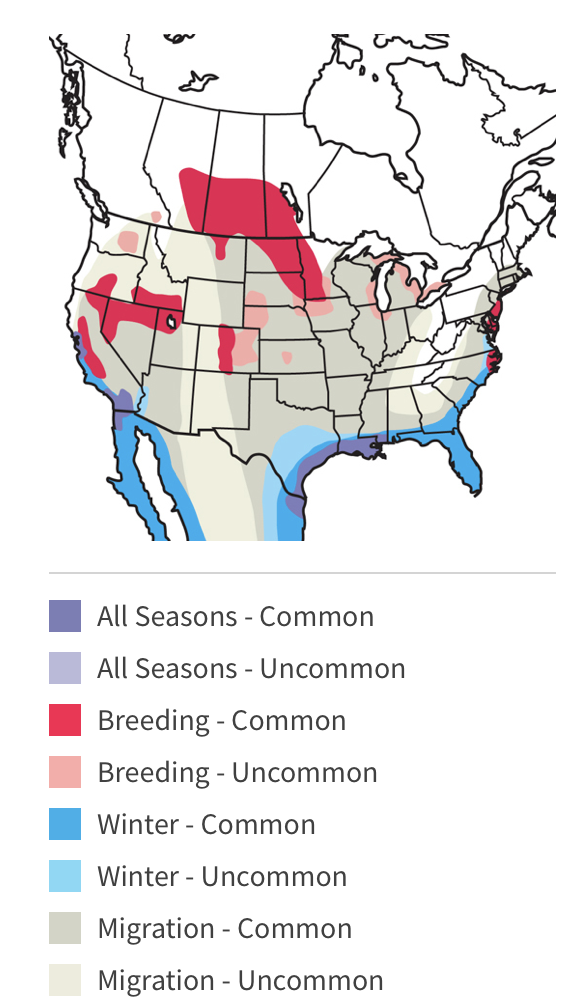
Although these Terns have a forked tail, they can also spread their tail feathers to aid in catching the air, using their tail as a third wing to remain aloft. Look at how long their wings are compared to their body length.
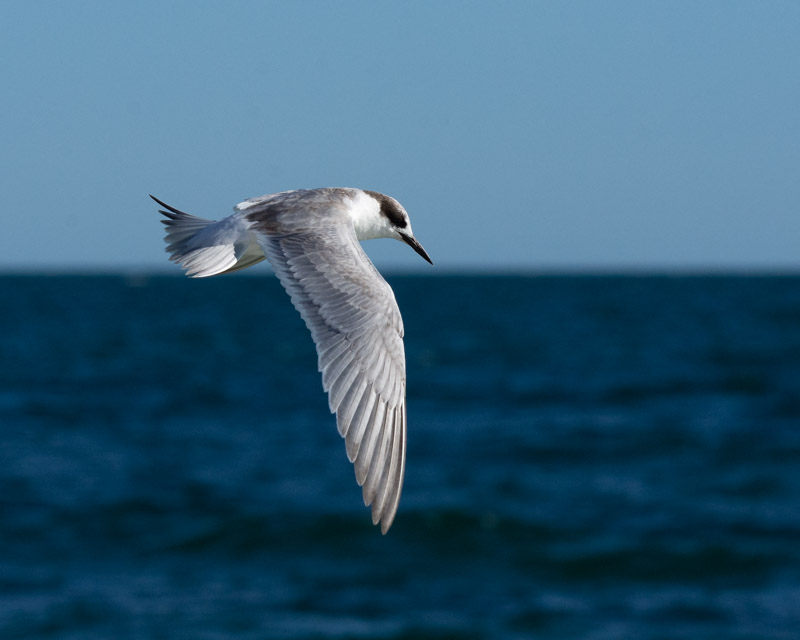
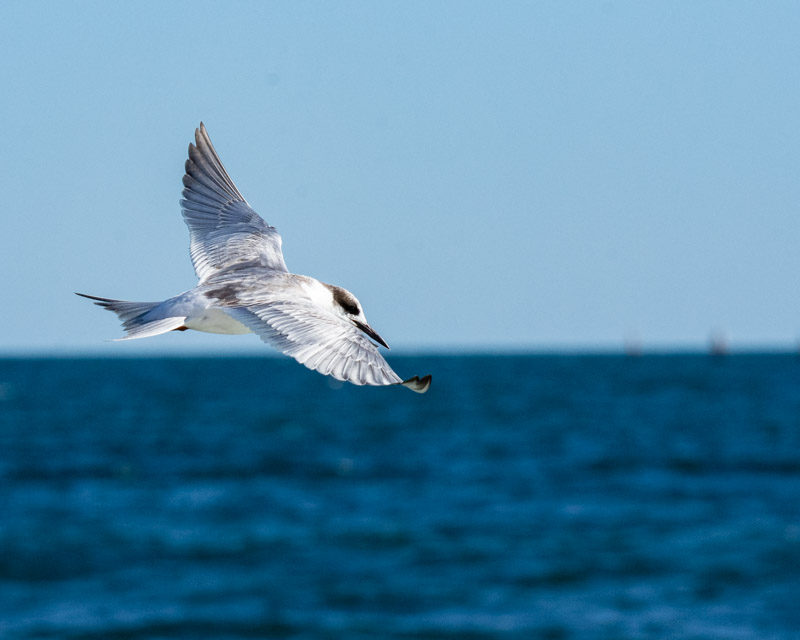
Even while standing still, they look streamlined.
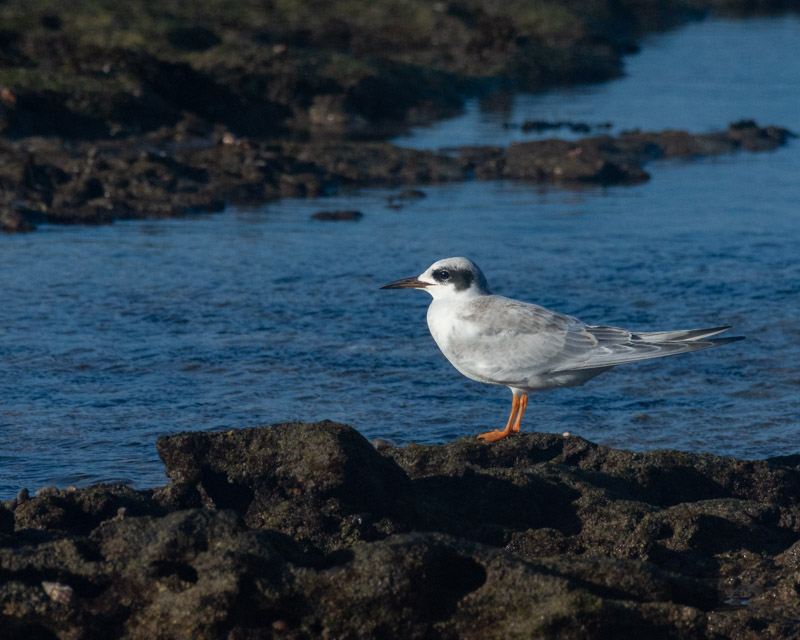
Another Forster’s Tern perched on a rock near the shore.
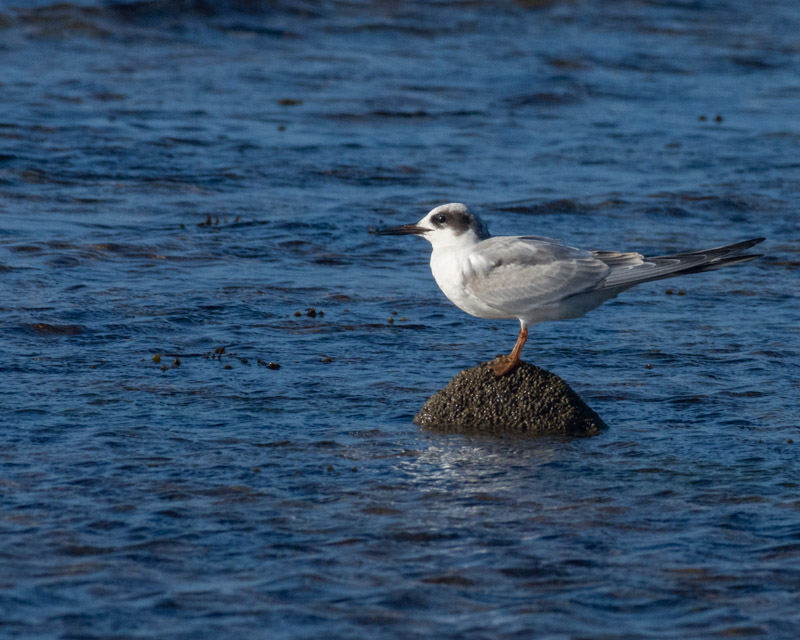
And I’ll end here with a Tern turning in the air. The Forster’s Tern is a bit over one foot long but its wingspread is over 30 inches. Those long wings are acting like sails and the Tern’s tail is spread.
